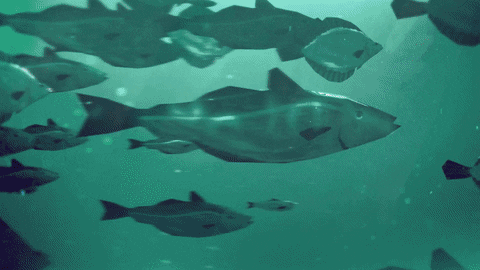Grab a bottle of tartar sauce and slip on a pair of shades—the future of fish farming is bright.
Seafood sensation: According to the UN, global fish consumption has jumped an average of 3.1% annually since 1961, outpacing consumption of all other animal proteins combined.
And it’s not slowing down: projections foresee a $245.2B global market by 2027.
Asia maintains the lion(fish)’s share of global aquaculture production (a whopping 92%), but in the U.S., most seafood we consume comes from overseas:
- Americans import 90% of their seafood.
- Over two-thirds of imports are farmed fish.
- The U.S. ranks 17th globally in aquaculture production.
Climate issues and the global market could prod the U.S. to dive deeper into fish farming, too.
Flying fish: Hot temperatures out west have prompted scientists to lend salmon a helping fin by shooting them over dams with air cannons—aiding with migration before they’re fried in their native rivers and streams.
With the future of these species in jeopardy, aquaculture may be the only sustainable solution to keeping our Friday night seafood buffets.
And a recent survey released by the Environmental Defense Fund shows 84% of American voters support proposals to study and implement more nearshore and offshore sustainable aquaculture operations.
Where this goes: Aquaculture’s bright future is garnering the attention of big meat. Cargill is looking into fish production deals, and JBS SA, the world’s largest meat producer, recently reeled in a big one by acquiring an Australian salmon producer for $314M.

